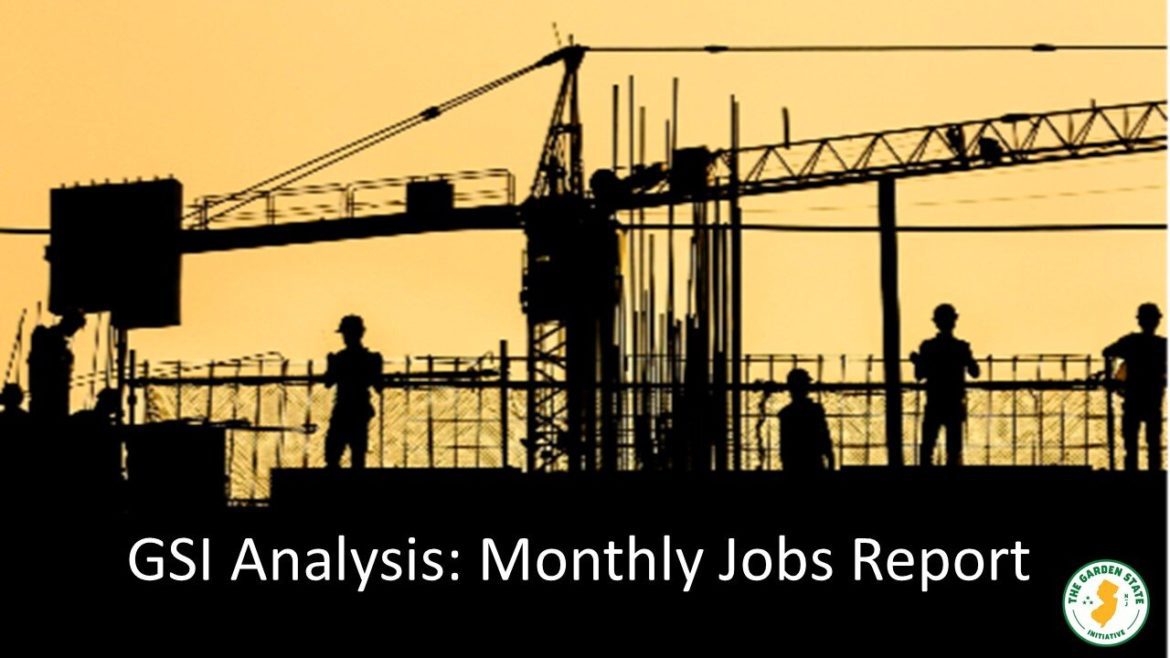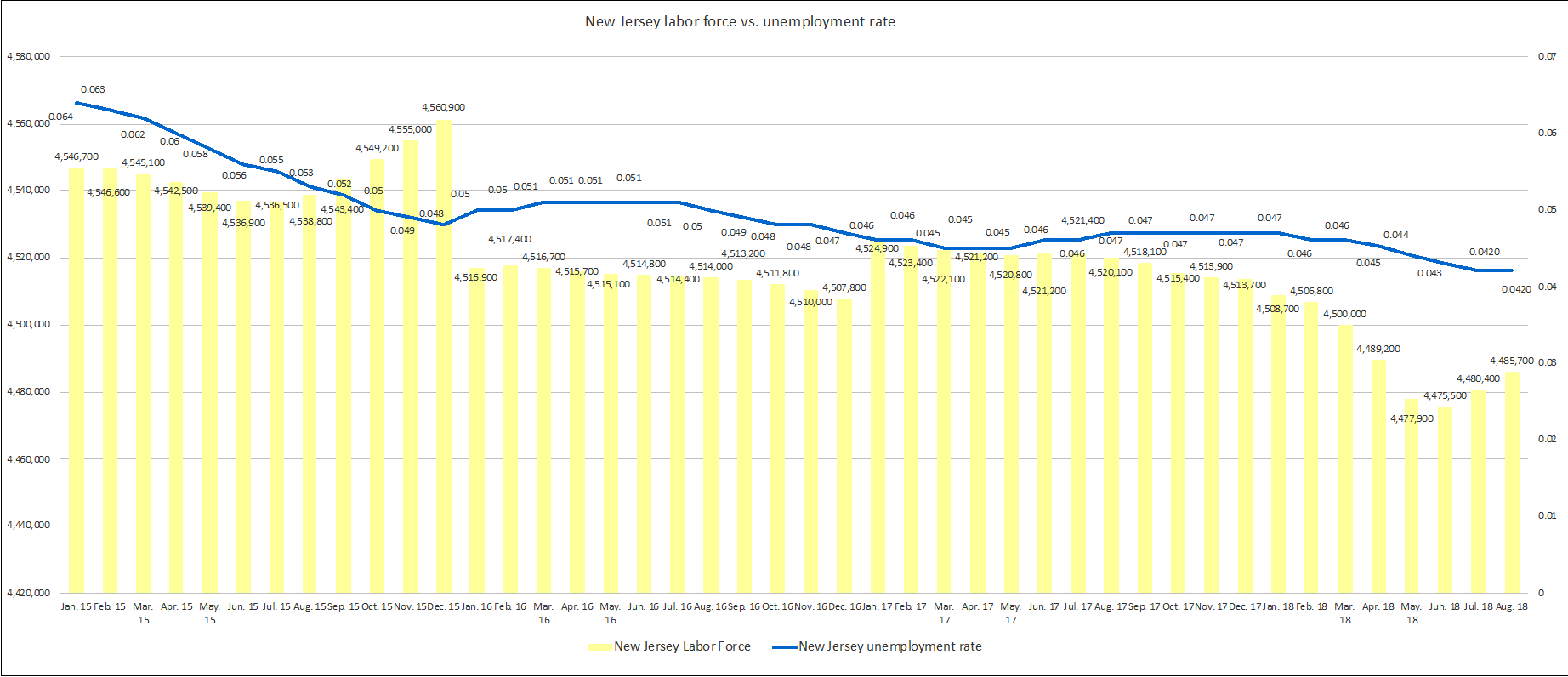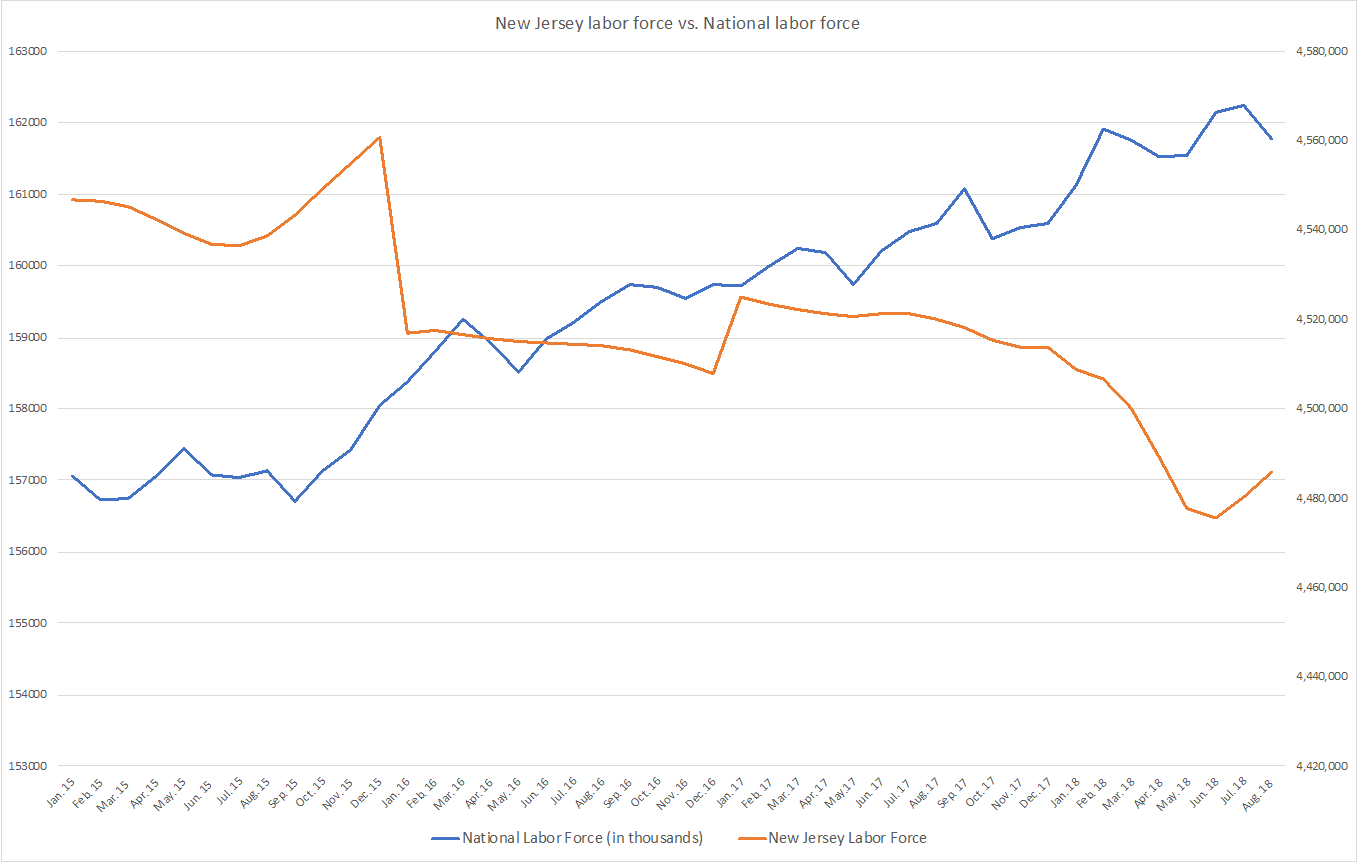Unemployment, TRANSFORMING OUR BUSINESS CLIMATE, Labor
GSI Analysis: Aug. ’18 NJ Jobs Report – Even With Recent Growth, State Still Lagging Far Behind National Economic Boom

-
August jobs report showed positive short term gains with New Jersey’s labor force increasing by 5,300 workers in August and marks the second month of positive growth in the state’s labor force in 2018
-
Even with these modest gains, the state’s labor force is smaller by over 34,000 workers from the same time last year and smaller by 61,000 workers from January 2015.
-
Our state’s sluggish economy is keeping New Jersey wages among the slowest growing in the country.
-
Economists and federal data continues to show how New Jersey has lost residents, wealth and jobs to lower tax states.
Garden State Initiative (GSI) analysis of New Jersey’s August jobs report showed generally positive signs over the month with gains in the state’s labor force and private sector job growth. New Jersey is still lagging behind many states over the long-run in terms of economic growth, wage rates and population levels, but August’s report showed some bright spots in the short term.
“At the same time that New Jersey’s labor force has been shrinking over the past three years, the national economy has been growing at a steady clip,” said Garden State Initiative President Regina M. Egea. “That has been coupled with wage growth in the Garden State ranking next to last in the nation.”
New Jersey’s labor force grew by 5,300 workers from July to August. The state’s labor force is made up of the number of people who reported being either employed (which increased in August) or unemployed and looking for work (which decreased in August). The state’s unemployment rate remained unchanged from last month at 4.2 percent.
New Jersey’s Labor Force vs. Unemployment Rate – 1/15 to 8/18
While it’s a positive sign that the state’s labor force is slowly growing, August’s report was only the second month of positive growth for the state’s labor force in 2018. Prior to July, New Jersey’s labor force shrank for 11 months in a row—the longest streak of a shrinking labor force since Jan 2015.
The second positive takeaway from August’s economic report was private sector job growth. New Jersey employers added 700 nonfarm, salaried jobs in August. Public sector job growth is not included in these figures since government job levels are typically more influenced by local municipalities, political initiatives or union contracts than a state’s economic performance.
The sectors with the biggest job gains in August were “Trade, Transportation & Utilities” (+2,600 jobs), “other services” (+2,100 jobs) and “Education and Health Services” (+1,100 jobs). The sectors with the biggest losses were “Services” (-3,100 jobs), “Leisure and Hospitality” (-900 jobs), “Manufacturing” (-500 jobs) and “Information” (-500 jobs). Last month, the “Leisure and Hospitality” sector was one of the biggest job gainers after two casino hotels opened in the state.
This month’s job report showed many welcome gains for the state. However, compared to the national economy, New Jersey is still lagging behind. Since August of 2017, the national labor force has grown by 1.17 million workers and national employers have added 204,000 jobs. Since August 2017, New Jersey employers have added 59,600 jobs but New Jersey’s workforce has shrunk by 34,400 workers.
New Jersey’s Labor Force vs. National Labor Force, 1/15 to 8/18
Also, despite more New Jerseyans being able to enter the workforce and find work over the past two months, some economists have voiced concerns over how New Jersey’s sluggish economic performance has impacted wage growth in the Garden State. According to the most recent data available for New Jersey from Q4 2017, New Jersey ranks 50th nationally for wage growth. Meaning that last year, working New Jerseyans saw their wages only grow faster than Alaskan workers (about 1.8 percent).
If New Jersey’s labor force continues to grow and can recoup the losses suffered from recent years then worker wages will likely start to increase on pace with other states (or at least not be among the slowest growing in the country). But until the state’s economy can support long-term growth for employers and provide opportunity for workers looking for employment, it’s likely that wages will remain relatively stagnant.
The state’s high-tax, high-cost model has undeniably cost New Jersey taxpayers, economic growth and jobs as many employers—and tax revenue—have Wall Street Journal documented how “about two-thirds of New Jersey’s $3.5 billion income outflow last year went to Florida, which doesn’t have an income tax.” Redfin also released a report this month showing how New Jerseyans are fleeing from the Garden State’s high-tax, high-cost cities to low-tax states like Florida and Texas.
Having two months in a row of positive job growth and a growing labor force is desperately needed positive news for New Jersey’s economy. But the state’s economic performance over the coming months (and years) will determine if these recent gains will be short lived economic reprieves or growth in spite of state policy.


